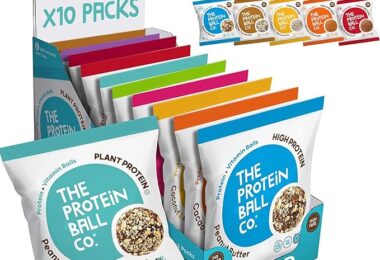Getting your kids to eat healthy is no mean feat. One way to be sure they’re eating right is to limit the amount of salt in their diet, which can be a minefield in today’s world of processed food.
It’s National Salt Awareness Week and while it’s a bit of a drag to discover that all our favourite foods are slowly killing us, as parents, we can’t really ignore the dangers of a high-salt diet. After all, they have been linked to diseases such as stomach cancer, osteoporosis, high blood pressure and obesity. That being said, it’s not just a case of cutting out fish and chips on a Friday night!
Often, food that’s being marketed to us as low in salt or safe for kids involves false advertising. A recent report from the Consensus Action on Salt & Health (CASH) has outed “family-friendly” chains such as Burger King and Hungry Horse as some of the worst perpetrators for cramming their grub with the stuff.
| “Meals specifically labelled as appropriate for your little ones were revealed to contain up to 150% of their daily recommended salt consumption.” |
Our craving for salt is an acquired taste, a throwback to the days when it was used heavily as a preservative. As a result, adding it to every meal has become ingrained in our eating habits and the best way to break this cycle is to start with the younger generation.
One of the aims of Salt Awareness Week is to encourage the food industry to act more responsibly when it comes to the salt content of children’s food. While that will go a long way to fixing the problem, it’s also down to parents to take control of their children’s diets and ensure they are as healthy as possible.
Start in the kitchen
Stepping out with the family to a restaurant can be a nice treat. Try to keep it as just that, a ‘treat’. Nothing beats a home-cooked meal and the advantage of preparing dinner yourself is that you know exactly what’s going into it. Besides, eating in is much cheaper than eating out. Why not save yourself the money?
Get the whole family involved
The truth is, we as parents could do with reducing our salt intake too. Once your child is old enough to be dining with the rest of the family, their salt consumption skyrockets. Instead of eating specially designed baby food, they’re chowing down on whatever’s on the family-menu.
It’s hard to find the time to prepare a gourmet meal for you and your loved ones every night. We all have jam-packed schedules and sometimes it’s just easier to order in than to face the stove, but the internet is a great resource for quick, easy meals that are good for you and taste great.
You’re sure to find something you can enjoy without putting your health at risk. Be smart with your food prep and the whole family can reap the benefits.
Check the label
Everything you need to know about your food is right there on the packaging. By comparing the nutritional information of the items in your shopping cart you can soon weed out the main offenders. This might take some extra effort to begin with, but once you’ve found the products that are right for you, just add them to your regular shopping list and before long, your trips to the supermarket will be a breeze.
Swap out their snacks
Some of the worst culprits are the salty snacks between meals. It’ll come as no surprise that a bag of crisps is up there on the list, containing up to a full gram of salt – that’s half the recommended amount for a child aged 1-3!
Try substituting in some fruit instead. Serve up tuna and tomato or chicken and lettuce in place of ham and cheese sarnies. If you get them into the habit of snacking this way early on, you can minimise the risk of them developing bad snacking habits later in life.
Take it off the table
Your food already contains more than enough salt without showering it in the stuff as the shaker is passed round the dinner table. Take it out of the equation and leave it in the kitchen. You’ll soon find that you don’t miss it!
You can learn more about National Salt Awareness Week at the Consensus Action on Salt & Health website where you can also find helpful resources such as placemats and leaflets – all free to download!


![[Image - Ryan McGuire]](https://www.fqmagazine.co.uk/wp-content/uploads/2015/03/181bbfa794e218f5cd90439ff3dd1578.jpg)





